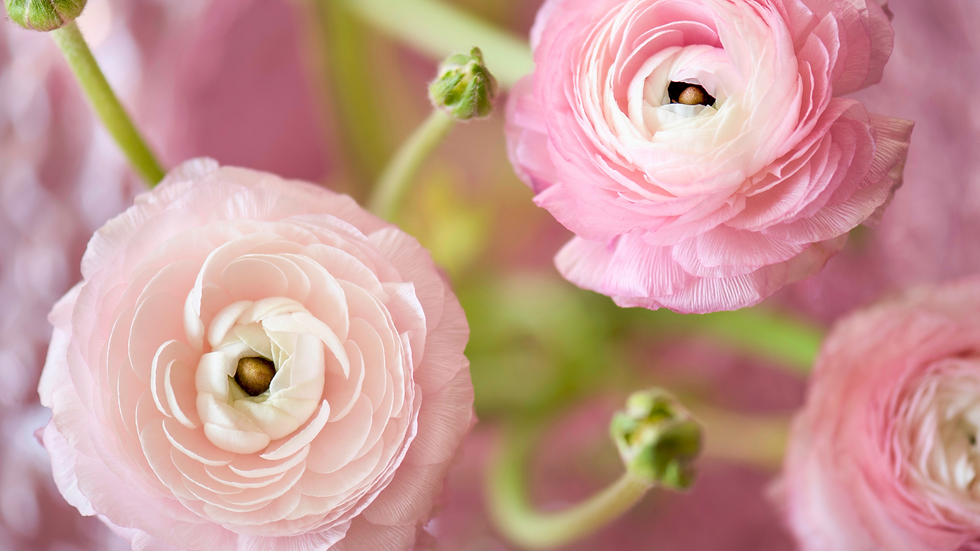How to Grow Capsicum
- The Carbon Garden

- Oct 15, 2024
- 3 min read
Updated: Oct 8

In this article, we share a comprehensive guide to growing capsicum at home.
Quick Guide Information
Common Name: Capsicum, Bell Pepper, Sweet Pepper, Chili Pepper
Scientific Name: Capsicum annuum
Family: Solanaceae
Plant Type: Small Bush
Life Span: Annual to Short Lived Perennial
Time Till Harvest: 80-100 Days
Light Requirement: Full Sun
Optimum pH: 6.0 - 6.5
Whether you like them sweet or spicy, capsicum (aka peppers) are a marvelous plant for your garden. There is a grand diversity of capsicum to grow which are suitable for cultivating in many different climates. When it comes to choosing a variety, finding one that is known to work well in your climate is a great place to start.
In temperate climates capsicum grows as an annual but in sub-tropical or subtropical climates they can grow as short-lived perennials. In temperate climates plants tend to stay relatively small, no greater than 1 meter in height and grow out bushy. Certain varieties in tropical climates can grow into large bushes.
Propagation
Capsicums are easy to grow by seed. These should be planted in a nutrient rich soil mix and kept moist until germination which occurs within 5-10 days. If starting in seed trays, let them settle in for another 5-10 days before transplanting into a larger pot. Alternatively, if your seeds are highly viable you can start them directly in a bigger pot.
This can be transplanted into the garden after 4-5 weeks once the plant is well established and the last threat of frost has passed. Peppers can be a bit sensitive in some climates, so it is better to ensure they’re well established in pots before transplanting.
Planting and Maintenance
Planting
+ Capsicum likes rich soil that is well amended with compost. If planting in nutrient poor soil, you can heavily amend it with fresh compost before planting.
+ Capsicum loves sunny locations and will have low yields with excessive shade.
+ Pepper stems are sensitive to rot. Avoid burying them too deep in the soil below the base of the stem.
+ Keep them well watered and partially shaded for 4-5 days after transplanting so they are less stressed.
Maintenance
Capsicum is relatively low maintenance compared to other plants. They don’t need pruning, trellising, or any other support during their growth. Make sure they are well watered and if they seem to be lacking nutrients feel free to top dress them with some compost. If you are using mulch (which you should!) try to move it away from the plant stem during wet conditions to avoid rot.
Nutrient Support and Foliar Care
As capsicum plants begin to put on new growth, they benefit from a steady and balanced nutrient routine. Strong stems, lush foliage, and consistent fruiting all depend on gentle, ongoing support.
If you’re following The Carbon Garden Program, begin the fortnightly foliar spray cycle as soon as active growth begins:
Week 1: Plant Food (10ml per litre of water)
Week 2: CropBioLife Activator (2ml per litre) + Plant Tonic (2ml per litre)
Repeat this cycle every two weeks throughout the growing season. Spray in the early morning or evening, when temperatures are mild and the air is still. Leaves should remain wet for several minutes to allow for full nutrient absorption.
If you're using a different fertiliser system, take care not to overfeed, especially with nitrogen. Too much can lead to abundant leaf growth but fewer flowers and fruit. And as always, we recommend avoiding synthetic fertilisers alongside CropBioLife Activator, as these can disrupt its natural, plant-aligned function.
Whether you follow The Carbon Garden approach or another low-tox system, consistency is what matters most. A calm and mindful routine supports not just healthier fruit, but a stronger, more resilient plant over time.
Common Problems
+ Foliar Diseases - This typically occurs when there is too much moisture and not enough sunlight. Consider pruning the inside of the plant to increase evaporation and airflow.
+ Damping Off Disease - This occurs to seedlings when they are just beginning to grow. This causes them to topple over and is caused by a fungal infection. This is an issue with your soil, so consider using a different soil mix if this problem persists.
+ Fusarium Stem and Fruit Rot - This appears as dark lesions on the stems or at the tip of roots. It is often a result of excessive moisture and it’s persistent in your environment. Plants infected with fusarium cannot be treated, so consider removing them from your garden.
+ Blossom End Rot - The symptoms of this are dark spots and lesions on the fruits. This often is caused by lack of calcium in the soil so consider adding an organic calcium organic.
For more guidance on how to grow naturally and in tune with the seasons, visit our website or explore our garden guides.






Comments